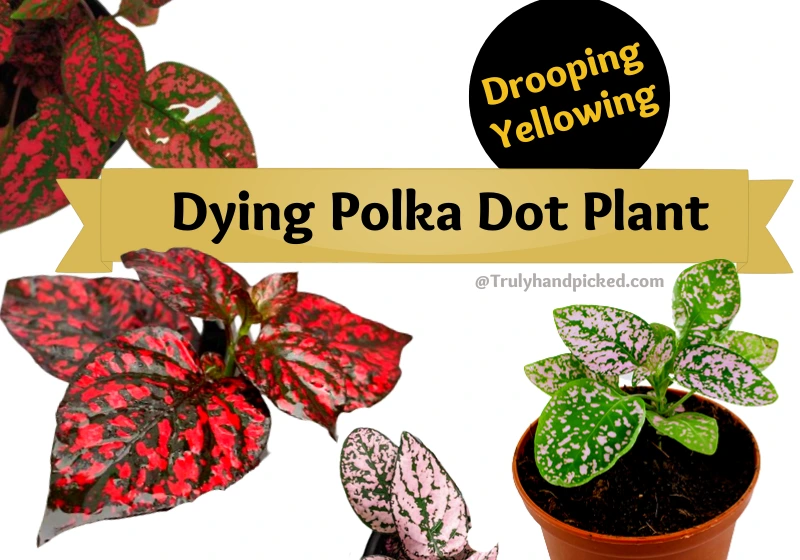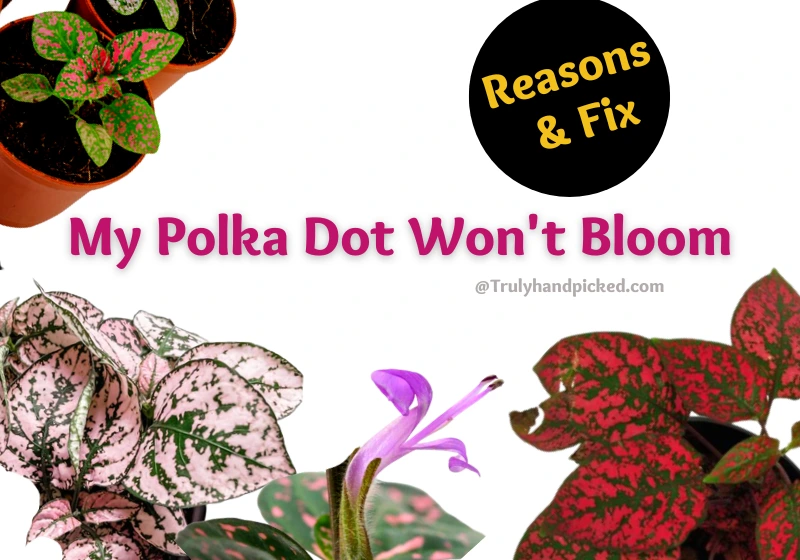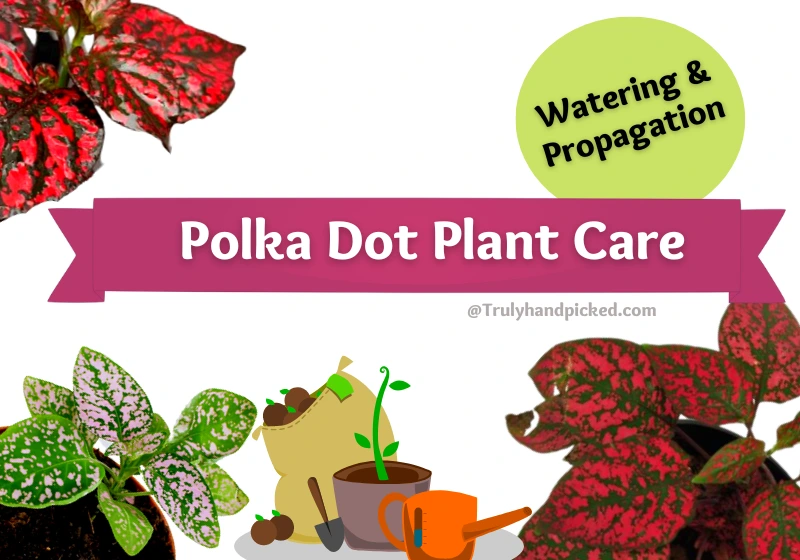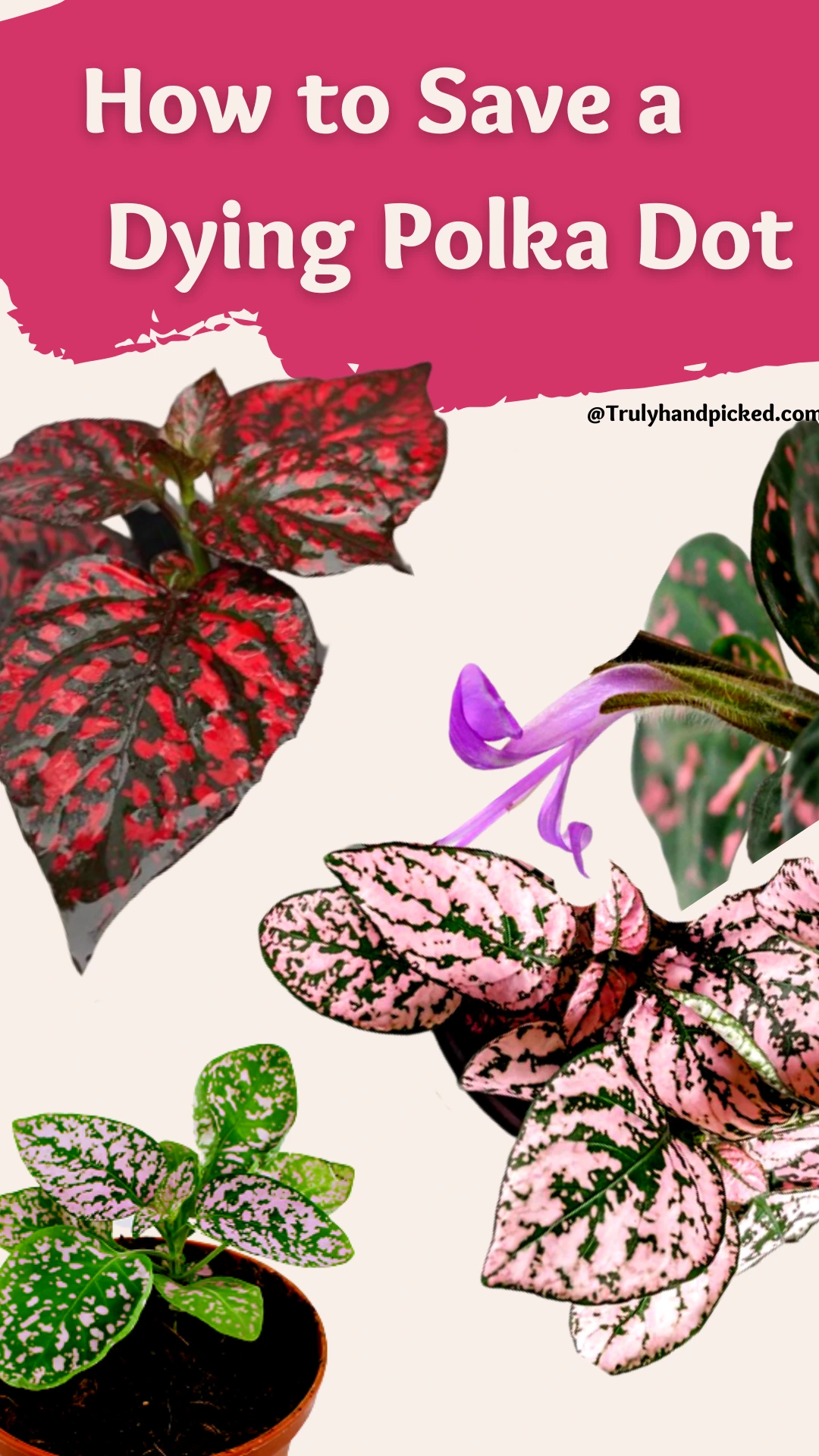The polka dot plant is a stunner. It is an ornamental species of flowering plant from the Acantharean family. The foliage of this plant has colorful spots, which often combine into larger areas of shades on the leaf surface.
This herbaceous, perennial plant has got this name for its variegated color combination on the leaf-shaped foliage. A polka dot plant could grow up to 1-2 feet and thus, be easy to care for as a houseplant, as well as an outdoor plant.
It is native to South Africa and some regions of South East Asia. Let’s get more information about how to grow and take care of a growing polka dot plant expertly with our smart guidance below-
How to Care for Dropping Leggy & Dying Polka Dot :
You may face some common problems with a growing polka dot due to the imbalance in caring methods. You should always find out the real cause of trouble, to get rid of the troubleshooting issue efficiently. Here are some common problems and their solutions ideas we refer to, in this regard-
Common Problems:
- Brown leaves
- Leaves are turning yellow
- Dropping leaves
- Wilting leaves
- Leaves are getting faded
- Curly leaves
- Stunt growth
- Not blooming
- Crispy leaves
- And sometimes a dying plant
Possible Reasons:
- Overwatering
- Underwatering
- Irregular watering
- Poor drainage system
- Soggy soil
- Cold injury
- Sunburn
- Malnutrition
- Overfertilization
- Pests’ ad bugs infestation
- Long inattentiveness to your plant
- And for keeping your plant in an unsuitable climate for long
How to Fix:
- Do not water your plant before the top surface of the soil turns dry
- Stop overwatering your plant right away
- Do not keep your plant unwater for more than 3-4 weeks
- Don’t feed your plant more than twice a month or less than once a month
- Make sure your use soil and planter with proper drainage quality
- Do not keep your plant water-logged ever
- Keep the growing temperature consistently warm
- Place your plant away from too bright sunlight
- Keep your plant safe from cold drafts
- Do not let the bugs or pests infestation unattended for long
- And keep pruning as well as repotting sessions consistent with proper schedules.
How to Get Your Polka Dot Plant Bloom:
This pretty ornamental plant even produces eye-catchy flowers, around its super variegated foliage. A polka dot plant grows tiny lilac-type pinkish flowers on stalks.
You can see the blooming session around the late summer to early fall seasons. Here are some quick tips on how to encourage this blooming quality in your plant naturally through its daily caring routine-
- Feed your plant twice a month with a high-nutrient plant food during the blooming season
- Keep them in bright indirect sunlight
- Chances of transplant shock, so wait for sometime
- Keep your plants away from the infestation of bugs or pests
- Water your plant exactly after each session of fertilization
- You can apply liquid fertilizer instead to avoid watering after the feeding
- Prune your plant attentively every 2-3 months
- Clip off the flowers, if your plant is leggy -before they begin forming
- And make sure your plant is draining its excess water very well throughout the entire growing session.
- Also, accept that some plants may die after blooming
How to Care Polka Dot Plant:
Soil:
Plant this species in loose, moist, soil with well-drainable quality. Prepare the soil with pumice or perlite to increase its drainage quality. Keep the pH level between 6.1 to 7.3 which is slightly acidic.
How Often to Water:
A polka dot plant prefers a constantly moist medium to thrive but is not soggy. Provide your plant with a moderate amount of water each week. Try watering your plant, only when the top ½ inch of the soil turns dry completely.
Fertilizer:
Feed your plant once every 2-3 weeks, especially during the peak months. Apply any organic fertilizer like compost, manure, etc. in diluted half of strength form. Combine ½ tsp of any organic plant food per 1 gallon of water.
Sun Exposure:
Keep your plant under the sun with partial shade to full sun. Provide your plant with bright but indirect light to get the best thriving from it. Try to keep the light average consistently without increasing the intensity too high or too less.
Climate:
Keep the circumstance steadily warm by maintaining a temperature between 60-75° F. It prefers moderate to high humidity levels of about 50% or above, along with a warm climate.
How often to Prune:
This polka dot plant gets leggy frequently. So, you need to prune your plant every 3-4 months attentively. You can pinch back or cut the top of the leaves of each stem to encourage new growth. Besides, remove the discolored or any infected part from your plant during this process.
Repotting & Pest Issues:
When you find that your plant is outgrowing its current planter, repot it in a bigger planter with a wider mouth. Try this course every summer or at the end of the springtime.
Always use fresh, rich, light, and well-drained potting mix while replanting your plant in a new planter.
Aphids, mealybugs, whitifies, spider mites, etc. are some common insects, you may find around a growing polka dot plant.
Apply homemade remedies like neem oil spray, peppermint oil spray, soapy water spray, etc. to get rid of such bugs or pests’ infestation on your plant effectively.
Polka Dot Plant Propagation:
Propagating a polka dot plant is not a tricky course to do. It is as similar to any other ornamental plant. Try to do the rooting process in water, instead of the direct soil plantation for the best result. Here is a quick guide about how to do the propagation correctly like a pro-
Supplies You Will Need:
- A sterilized scissor or shear
- A glass of distilled water
- A clay planter
- Rooting hormone
- Potting soil, amend with perlite and organic matter
- And a sprayer
How To:
- Cut a part of the stem from the top of any growing stem from the parent polka dot plant
- Make the cut about 4-5 inches long with 3-4 leaves on it
- Remove the leaves from the bottom and leave only 2 leaves on the top
- Dip the end of your cutting in rooting hormone first
- Place it on a paper towel to dry up a bit
- After 1-2 days, place the cutting into a glass of water and out the glass in a warm spot
- Make sure your plant could get bright but indirect light with high humidity in that place
- Keep changing the water every 5-7 days
- New roots will initiate within a couple of weeks
- Let the root grow at least 1.5-2 inches long
- Then, replant the cutting in a pot with the preferred potting soil
- Water the soil thoroughly along with misting the leaves
- Finally, keep the planter in a preferable space and let it thrive naturally
Best Types of Polka Dot Plant:
You can get ample varieties in this single category to pick from. Different varieties of polka dots grow different types of colorful foliage. They need quite similar growing essentials to thrive well. here are the best 5 types of polka dot species, which are easy to cultivate and effortless to maintain as well-
Carmina:
It is one of the most easy-to-care polka dot varieties you can grow in your yard. It is a perennial species that can grow light pink to deep pink foliage with green veins. Try to keep this variety under hardiness zone 10 to 11.
Confetti:
This is one of the smaller categories of this species. Confetti polka dot mostly can’t grow more than 24 inches long and thus, easily grows in pots. The foliage of this variety grows with variegated color combinations over deep green surfaces.
Red Splash:
Red splash is another small grower polka dot variety that grows up to 12 inches at its highest peak. This species grows pointy leaves in bright red shades along with deep green veins over the red surface.
Purpariana:
This variety of polka dot plants considers one of the most striking species due to its bright violet foliage. You can grow this category under bright and direct sunlight without any kind of shade. It prefers more fertile soil than its other equivalents.
Pink Brocade:
Like its name, this species of polka dot plant has mottled pinkish spots over the deep green surface of the foliage. This is one of the fast growers among the other varieties and could grow up to 2 feet tall with proper care.
Pinterest Image: Save Your Polka Dot Plant
FAQ: Is Polka Dot Plant Poisonous?
Polka dot plants are not toxic and quite safe for house pets as well as humans. However, that doesn’t mean you can let your pets or kid could gulp it often.
Like any other houseplant, you should not let your children or house pets ingest any part of the plant anyhow. They can play to stay around it happily through.



